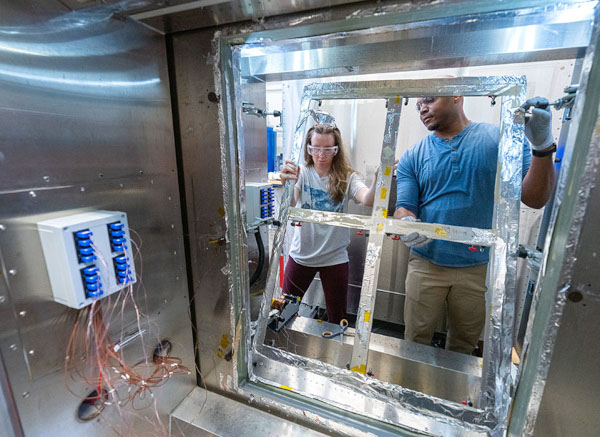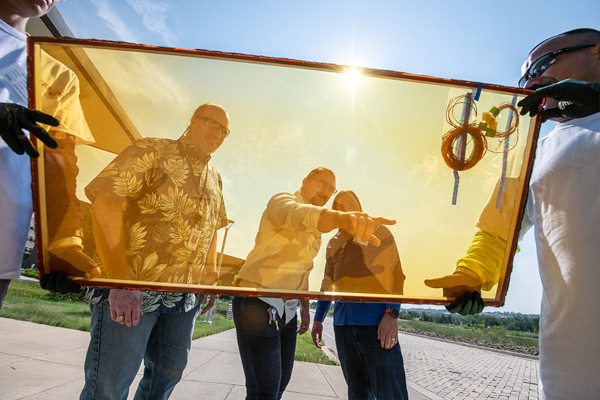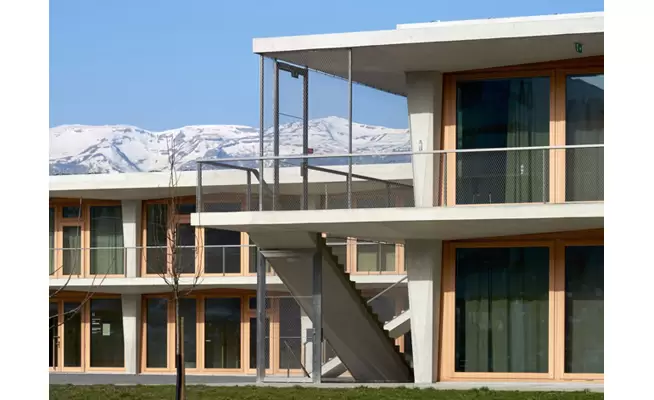Revolutionizing Building Spaces: NREL’s Groundbreaking Windows Research
For more than 35 years, the scientists at the National Renewable Energy Laboratory (NREL) have been at the forefront of evaluating, developing, and demonstrating advanced fenestration research. Windows, often overlooked in building design, play a significant role in our indoor environments. NREL’s research has led to groundbreaking innovations that improve energy efficiency, occupant comfort, and the overall sustainability of buildings.
The Importance of Windows
Windows have a profound impact on the way we experience the indoor environment. Chioke Harris, a researcher in NREL’s Building Energy Science Group, emphasizes their influence, stating, “Windows have an enormous effect on the well-being of building occupants. Given the amount of time people spend indoors, windows have an outsized influence on the way you feel.”
The energy consumption of buildings is directly affected by the performance of windows. According to the U.S. Department of Energy (DOE), windows account for 8.6% of energy use in buildings. Inefficient windows can lead to increased energy costs as heating, ventilating, and air conditioning systems work harder to compensate for heat loss or gain.

NREL’s Windows Research Journey
NREL has been dedicated to improving windows since 1983. Their early work laid the foundation for dynamic window technology, where glass darkens to shield occupants from excessive sunlight. Ongoing research focuses on testing window durability, demonstrating new technologies, and exploring emerging ideas.
Rob Tenent, the lead researcher for NREL’s windows projects, states, “A lot of it is driven just by that human factor: People simply like windows.” NREL collaborates with major glass and window companies to develop proof of performance and ensure durability, key factors when convincing real estate developers to adopt new window technologies.
Advancing Window Performance and Durability
One significant aspect of NREL’s windows research is assessing durability. Alliston Watts, an NREL researcher with expertise in insulation and durability, notes that windows are the weakest point in building enclosures. NREL researchers conduct accelerated durability tests to evaluate factors such as sealant degradation, glass stress, and resistance to UV light.
NREL’s scientific basis and industry-standard evaluation have led to advancements in dynamic electrochromic windows, high thermal performance technologies, vacuum insulating glass, multipane constructions, and photovoltaic technologies. Additionally, NREL is actively defining enhanced methods for evaluating the durability of existing window technologies and improving industry practices.
Field Validation and Collaboration
NREL researchers are actively involved in field validation studies to ensure the practical application of their research. The Denver Federal Center in Colorado serves as a testing ground for various window technologies. By evaluating thermal performance, comfort improvements, and energy expenditure on heating and cooling, researchers determine the effectiveness of windows in different climates.
To expand their research, NREL has formed a collaboration with the University of Colorado through the Renewable and Sustainable Energy Institute (RASEI). This partnership involves students in projects focused on evaluating window performance in the field and studying the effects of condensation on secondary window products.
Beyond Energy Efficiency: The Power of PV Windows
NREL’s research extends beyond energy efficiency to explore the incorporation of photovoltaic (PV) technology into windows. Lance Wheeler, an NREL scientist, has developed PV windows that convert sunlight into electricity while providing thermal insulation. PV windows can significantly improve a building’s energy performance, especially in cold climates where solar heat gain is beneficial. Despite potentially lower efficiency compared to traditional solar panels, PV windows can still make a substantial difference in a building’s energy use and carbon footprint.
Recognized Leaders in Window Technologies
NREL’s expertise in developing, commercializing, and evaluating early-stage window technologies has made them a recognized leader in the field. Their collaborations with industry partners and startups, such as NEXT Energy Technologies, AeroShield Materials, and UbiQD, have resulted in successful commercialization efforts.
As NREL continues to drive advancements in window research, they are actively approached by new companies seeking to work together. Their commitment to creating sustainable and innovative solutions for windows reinforces their position as industry leaders.
NREL’s groundbreaking research in windows has revolutionized the way we think about building spaces. By improving energy efficiency, enhancing occupant comfort, and exploring emerging technologies, NREL has paved the way for a more sustainable future. Their ongoing commitment to window research ensures that windows will continue to play a vital role in creating healthier and more efficient indoor environments.

Learn more about NREL’s windows research and their contributions to transforming the way we experience buildings.
Source: By Wayne Hicks | NREL with additional information added by GlassBalkan







